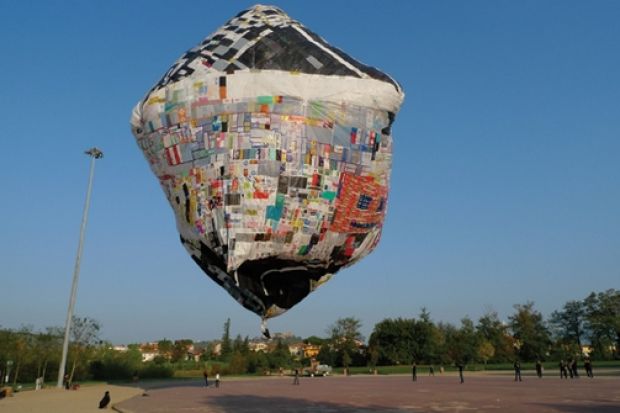Museum Show: Part 1
Bristol
Museums have such power to determine what is important and what is not that many artists have been tempted to create mini-museums of their own to celebrate their personal passions, undermine traditional canons and suggest alternatives.
Peter Blake, for example, brought together some of his favourite things - pin-ups, photographs of the Beatles, matchboxes, a Snakes and Ladders board - in a collage titled A Museum for Myself. Bill Burns assembled items such as miniature harnesses for his Museum of Safety Gear for Small Animals. And Meschac Gaba produced an installation directly challenging "the absence of museums of contemporary art in Africa".
For its fiftieth anniversary this year, the Arnolfini in Bristol is putting on a two-part exhibition of these "highly idiosyncratic, semi-fictional institutions". The first part, which continues until 19 November, brings together the work of more than 20 artists.
Some are dated, whimsical or wilfully obscure, and seem like art-world in-jokes. But Susan Hiller's display boxes from After the Freud Museum are full of intriguingly enigmatic juxtapositions, while Sina Najafi and Christopher Turner's Museum of Projective Personality Testing surveys the sinister and largely discredited tests once believed to reveal our "hidden impulses and desires".
If one stands outside the Room of Sublime Wallpaper, which forms one element of Ellen Harvey's Museum of Failure, the back wall offers a gleaming image of a spectacular Alpine landscape. As soon as one steps inside, it is revealed to be a series of carefully angled mirrors reflecting the paintings on the side walls, now disrupted by one's own face.
Another "museum" will take the form of a "temporary collaborative event" on 9 October, when a constantly enlarged and reassembled solar-powered balloon made of plastic bags (pictured above) will be released in Hengrove Park. Also off-site, Marko Lulic has constructed a sign on the roof of Bristol's M Shed, which opened in June as a museum of the city's life, rechristening it the Museum of Revolution.
Strangest and most striking of all is Asunción Molinos' World Agriculture Museum. This spreads over four separate rooms of Bristol's old police station on Bridewell Street and represents a kind of parody of the Agricultural Museum of Cairo, which is located in a colonial building with a similar antiquated lift from the days of George V.
The general shabby atmosphere, with noisy overhead fans and bits of polystyrene, frames for display cases and test-tube holders lying on the floor, has been lovingly reproduced. Yet the more one looks, the more one realises that Molinos has subverted the upbeat "message" of her Egyptian model with sharp comments on today's food shortages, farming methods and patterns of trade. What seems like an ultra-traditional museum turns out to be anything but.
